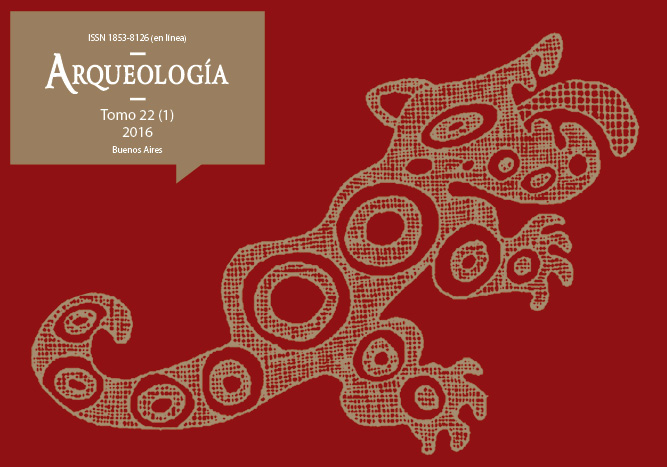Obsidian in the Late-Inka Period of Antofagasta de la Sierra (Southern Argentinean Puna): basin bottom <i>versus</i> intermediate sectors?
Keywords:
XRF, Late-Inka Period, Elites, Pastoralist households, Social power
Abstract
This paper provides information about the circulation of different varieties of obsidian in the Antofagasta de la Sierra micro-region in order to begin to evaluate some proposals about Late-Inka societies social and political organization aspects. In order to do this, geochemical analysis on obsidian samples from archaeological sites located in different microenvironments of the basin, specifically its bottom and intermediate sectors, were carried out. The results obtained are not conclusive about the existence or not of any control over the circulation of this resource by the elites located on the bottom of basin. However, in light of numerous precedents, it is possible to suggest that late local societies of Antofagasta, including the pastoral families of the intermediate sectors, kept in use long distance trade mechanisms and criteria that had a long historical trajectory. This first approach raises the need to further deepen not only in the geochemical aspects, but also in the technological ones, in order to advance in the understanding of the various practices involved in obsidian circulation in the basin’s socio-political network post ca. 1100 years BP.Downloads
Download data is not yet available.
How to Cite
Escola, P. S., Elías, A. M., & Cohen, M. L. (1). Obsidian in the Late-Inka Period of Antofagasta de la Sierra (Southern Argentinean Puna): basin bottom <i>versus</i> intermediate sectors?. Arqueología, 22(1), 211-222. https://doi.org/10.34096/arqueologia.t22.n1.2472
Section
Reports
Authors who publish in this journal agree to the following conditions:
- Authors retain copyright and yield to the journal right of first publication with the work registered with attribution license Creative Commons, which allows third parties to use the published always mentioning the authorship of the work and first publication in this magazine.
- Authors can make other independent and additional contractual arrangements for the non-exclusive distribution of the version of the article published in this issue (p. Eg., Inclusion in an institutional repository or publish it in a book), provided that clearly indicate that the work was published for the first time in this magazine.
- It allows and encourages the author / s to publish their work online (eg institutional or personal pages) before and during the process of revision and publication, as it can lead to productive exchanges and greater and more rapid dissemination of work published (See The Effect of Open Access).





(1)13.png)






1.jpg)
1.jpg)


13.png)
1.png)


(1)1.png)









